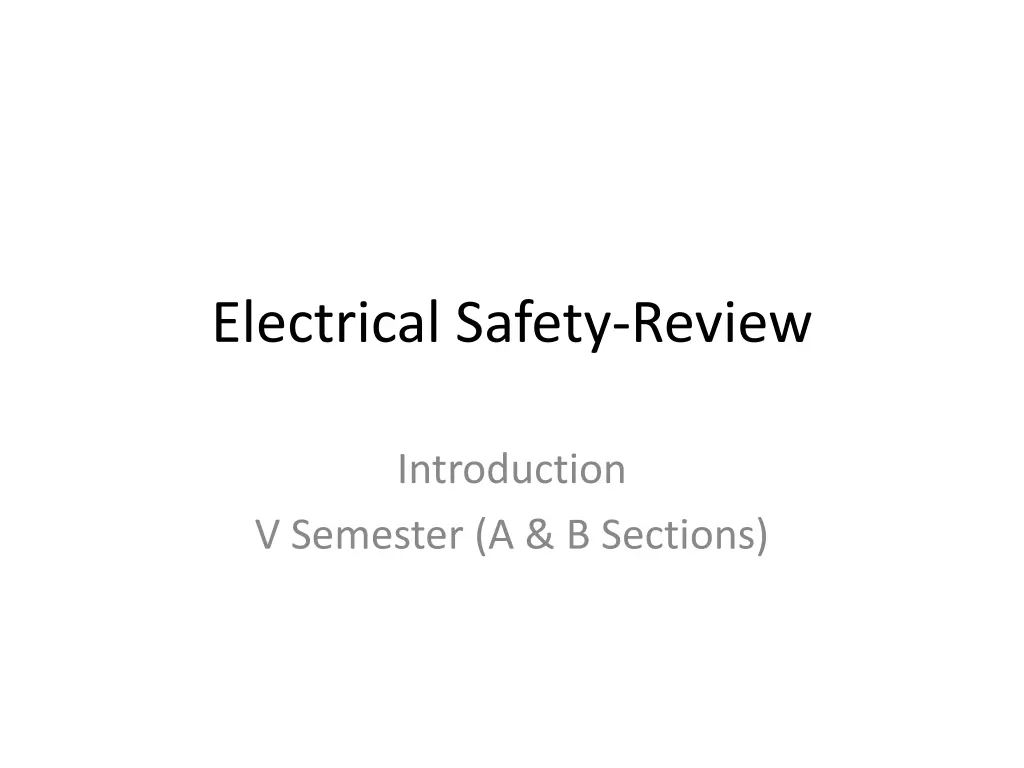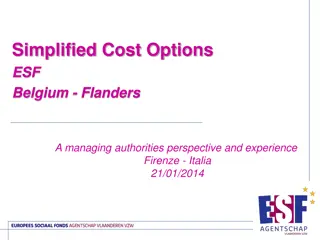
Electrical Safety and Engineering Courses Overview
Explore the interdisciplinary field of engineering safety, including courses in Safety Engineering and Electrical Safety. Learn about controlled and uncontrolled processes, welding safety, high voltage risks, and the effects of electrical shock on the nervous system. Discover insights into analysis of electrical energy conversion processes, electrical components and appliances, as well as design, manufacturing, and operation in electrical and electronics engineering.
Download Presentation

Please find below an Image/Link to download the presentation.
The content on the website is provided AS IS for your information and personal use only. It may not be sold, licensed, or shared on other websites without obtaining consent from the author. If you encounter any issues during the download, it is possible that the publisher has removed the file from their server.
You are allowed to download the files provided on this website for personal or commercial use, subject to the condition that they are used lawfully. All files are the property of their respective owners.
The content on the website is provided AS IS for your information and personal use only. It may not be sold, licensed, or shared on other websites without obtaining consent from the author.
E N D
Presentation Transcript
Electrical Safety-Review Introduction V Semester (A & B Sections)
Introduction Engineering safety is an Interdisciplinary branch Subject, with courses titles Safety Engineering (Petroleum Engineering Dept) Engineering Safety M.Tech in Electrical Safety
Electrical and Electronics Safety Engineering Civil Mechanical Computer
Controlled Process Uncontrolled Process Causes and Effects Arc Blast Uncontrolled Process Causes and Effects Shock Uncontrolled Process Causes and Effects
Welding Electric Arc Circuit Breaker Home/Industry Fuse
High Voltage Electrical Blast Mechanical effects High Pressure High Current
Nervous System Electrical Shock Skin Muscular Burns
Engineering Systems Modelling Design Analysis
Analysis of Electrical Energy Conversion process Input Energy Electrical Equipment Output Energy Voltage/Current Electrical Motor Speed/Torque Control System Transfer function Desired Response Disturbance
Electrical & Electronics Engineering Design/ Manufacturing/ Production Raw Materials/ Planning Electrical Safety Monitoring/ Maintenance Operation and Control
Basic Electrical components and Appliances Electrical Resistor Filament lamp Electric toaster Inductor Transformer Magnetic circuits Capacitor Reactive power supply Storage Device
Resistors electronic components. (a) Carbon composition resistor, axial lead, W, 470 tolerance. (b) Carbon film, axial lead, 1/4 Watt, 10 kW, 5% tolerance. (c) Vitreous coated power resistor, 1500 W. (d) Plate resistors in vacuum tube amplifier. (e) Vacuum amplifier where plate resistors would used. (f) Schematic of vacuum tube amplifier where plate resistors would be used. (g) Isolation transformer (115 V, 250 servicing transformerless electronic equipment. used as W, 10% enamel- wire-wound tube be VA) for
Resistors used in electric power systems. (a) Plate resistor. (b) Ribbon resistor. (c) Noninductive resistor. (d) Ribbon-wound resistor. (e) Plate rheostat (GE). (f) Schematic of plate rheostat (GE).
Applications of Plate rheostats Speed control of dc motors. Use rheostat to control field excitation. Power-factor control of synchronous motors. Use rheostat to control field excitation. Voltage control of generators and exciters. Use rheostat to control field excitation. Adjustment of voltage in control circuits. Use rheostat to vary impressed voltage. Speed control of wound-rotor motors. Use rheostat to vary secondary; not over 15 HP. resistance in motor
safety hazards with plate rheostats Exposure to high voltages at rheostat terminals; Burns from coming in contact with heated plates.
Copper, Nicrome, Iron electric toaster, stove, oven, space heater using Iron Wire Heating Filament Lamp Tungsten Lamp Lighting Short circuit leads to Arc Loose/poor Connections leads to Heating Problems
Overcome-Observe Fuses Infrared Thermometers Transmission Lines C.Bs Problems in Electrical Appliances made of Resistance
Ohmic Conductivity of Some Common Materials (at Room Temperature) (S/m) Material 4 10-6 Pure Water 7.3 10-4 Carbon Sea Water 4 0.5 107 Lead 0.9 107 Tin 1.7 107 Zinc 4.2 107 Gold 5.9 107 Pure Copper 6.3 107 Silver 2.7 108 Aluminum
Good reasons for practicing electrical safety Personal & Business Practicing electrical safety Regulatory & Legal
Arc Energy is a function of several variables Arc Voltage Drop Gap Arching Current between the Conductors Arc Energy Length of the Arc
Overcome the Arc Energy Incident Energy Risk Analysis/ Protective Equipments Heat Energy Received by the Body
Resistance Relations l = R a Where G = 1/R = Conductance in Siemens 1 = Where conductivity in Siemens/m E J = Point form of Ohms Law
Current sensors Voltage Sensors Frequency sensors Electrical Safe maintenance/ operation/control of power system equipments/components
Safe operation of Generating stations Safe operation of transmission networks with Lightning flash over faults Safe operation and maintenance of distribution systems Measurement of voltage, current and frequency Safe clearance of faults and protect power transformers using C.Bs with relays






















